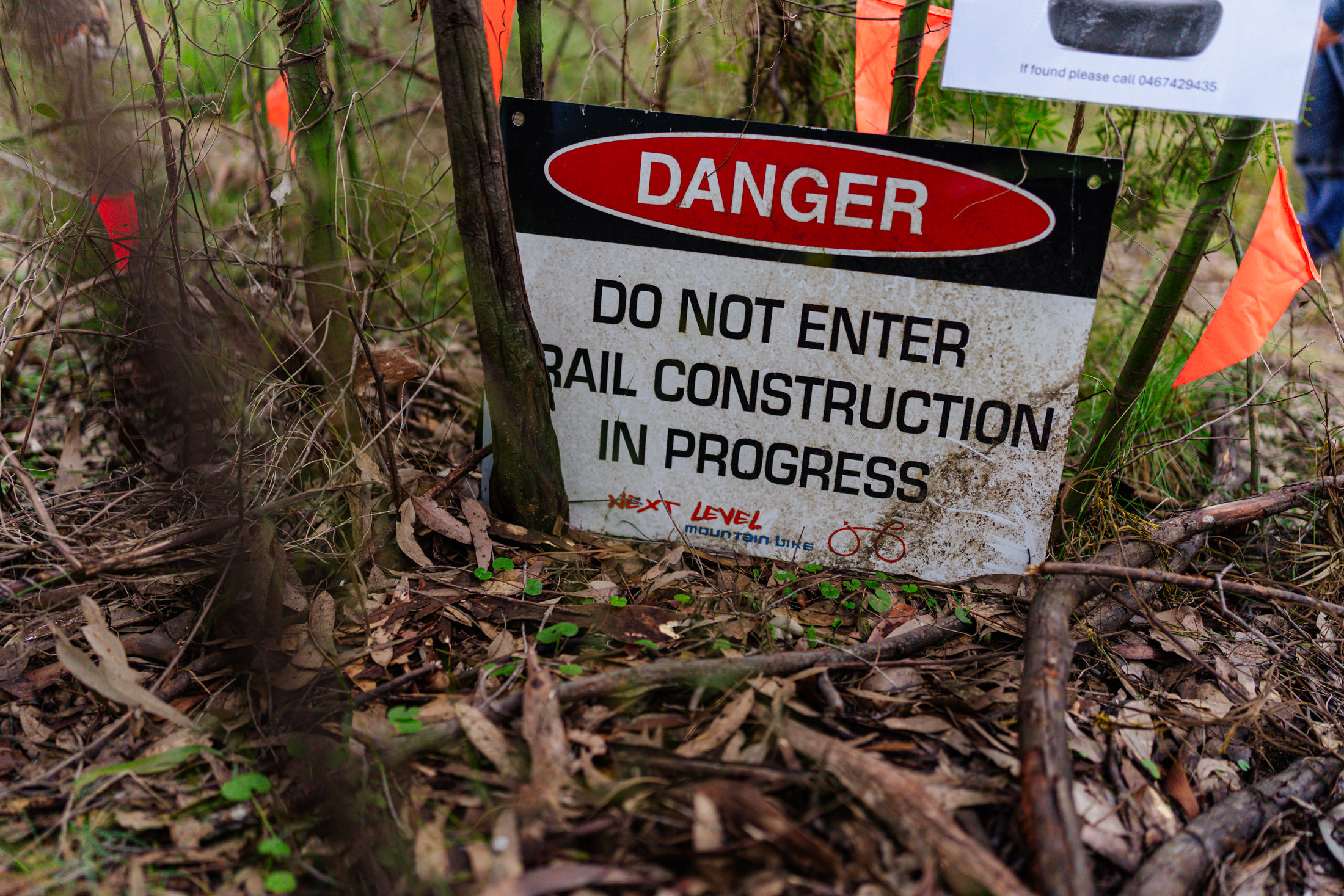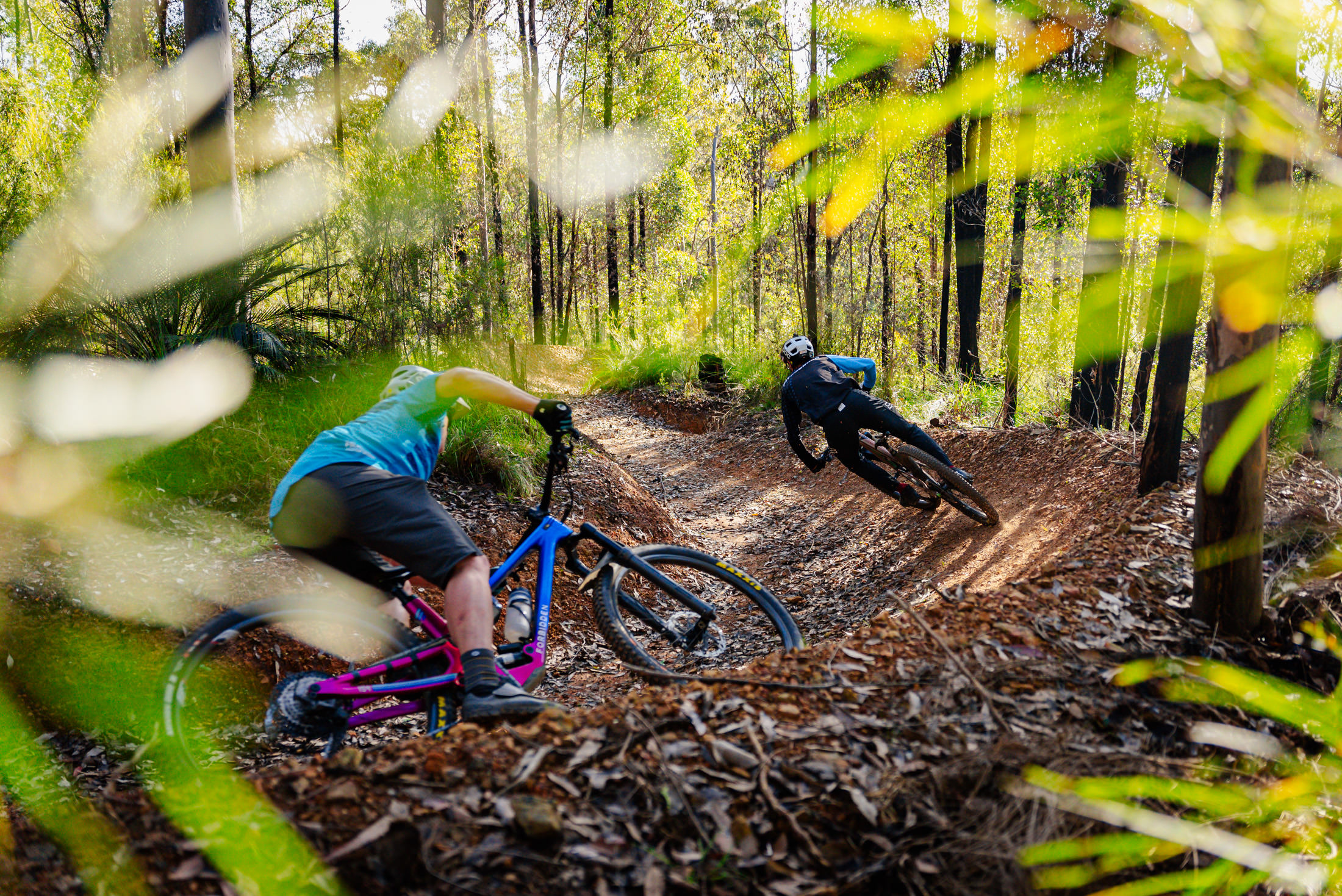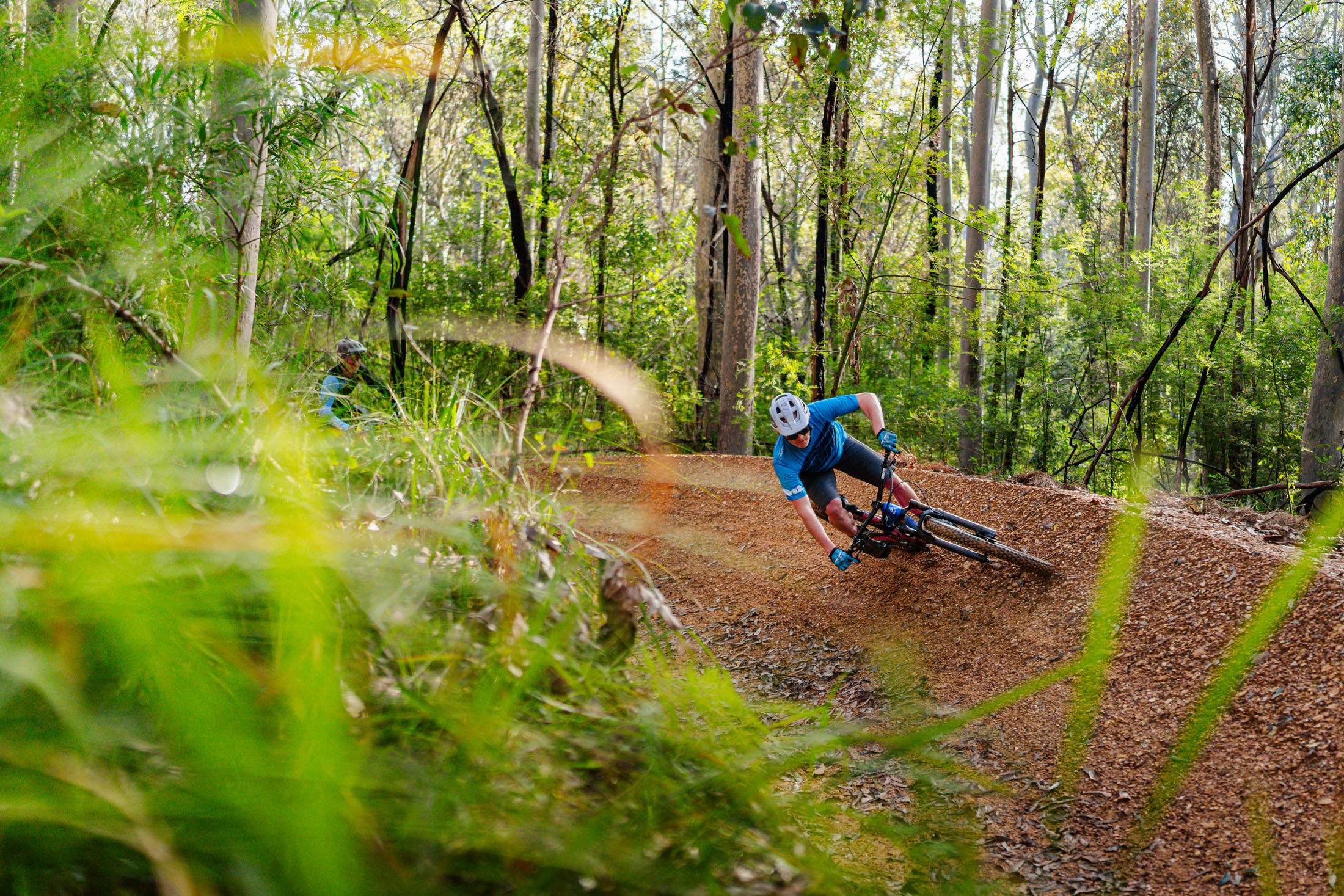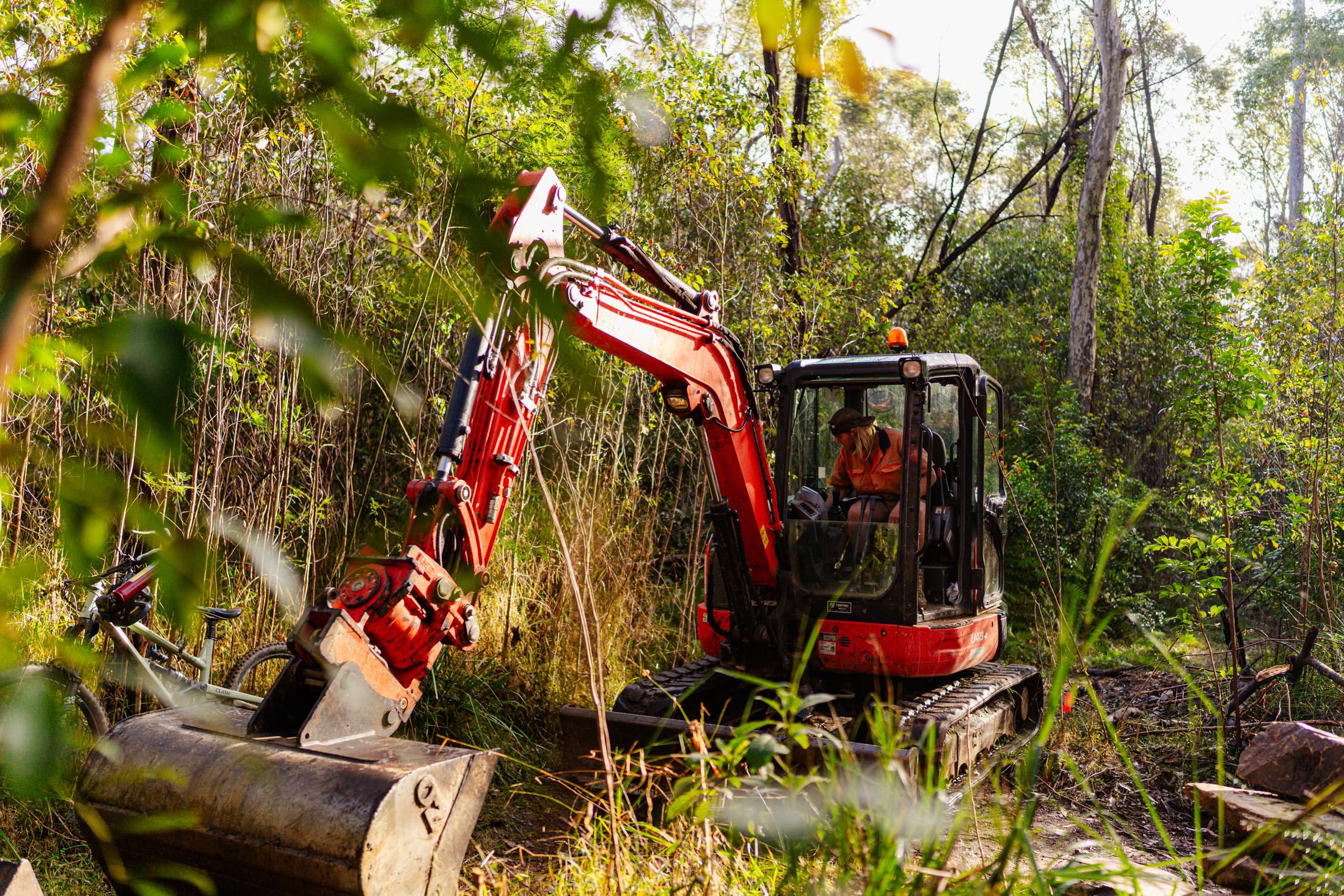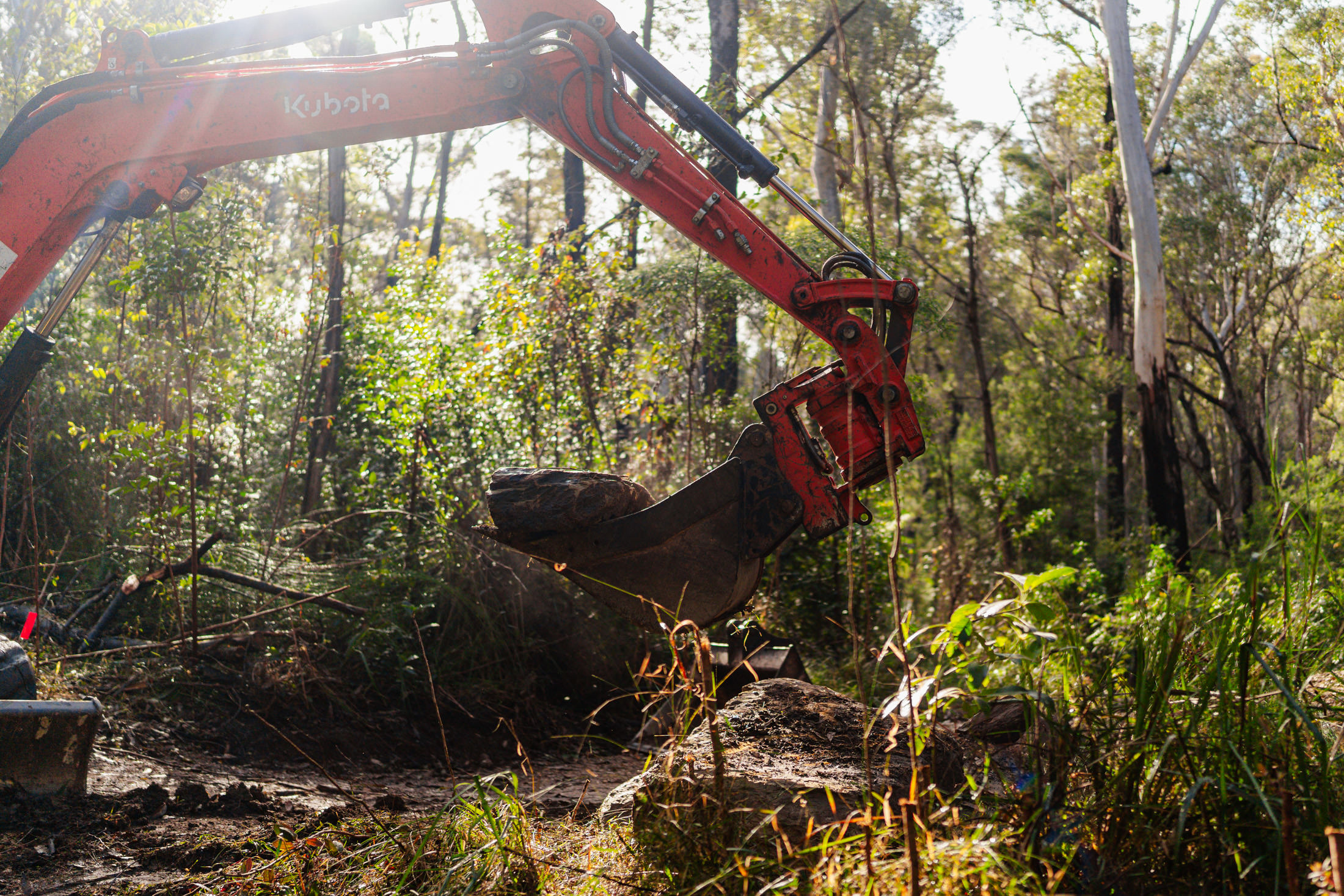Flow Mountain Bike acknowledges the Traditional Owners of the Mogo and the surrounding area, the Yuin peoples. We recognise their connection to lands, waters and communities and pay our respects to Elders past, present and emerging.
Mogo is already making waves and the trail network hasn’t even opened to the public yet. With over 130km of trails on the agenda when the park is finished, the little town on the South Coast will be home to Sea Otter Australia from 2025.
With Rocky Trail Destination, Rocky Trail Entertainment’s sister outfit, managing the build and Next Level MTB on the tools shaping the network, we caught up with Mogo Trail Manager Shane Spicer to get the skinny on what’s been happening in the woods and find out when you’ll be able to ride there.
Related:
- Rocky Trail Entertainment relaunch Sea Otter Australia in 2025
- Flow Destination Hub | Narooma, NSW
- Flow Destination Hub | Eden, NSW
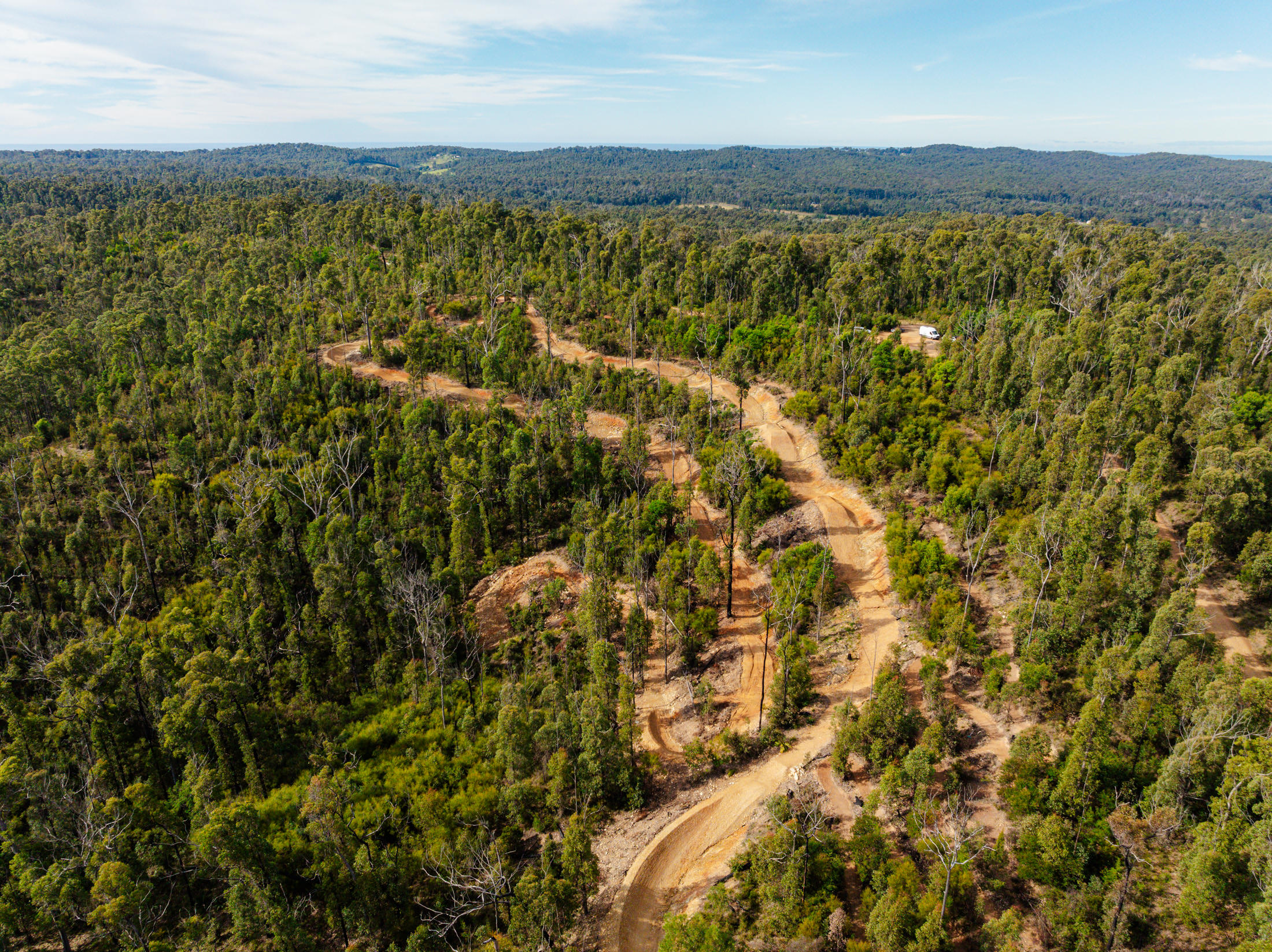
From the ashes
When we first reported on this project in 2021, the Eurobodalla Shire had just released the design and construct tender.
Of course, this was not long after bushfires ravaged the NSW South Coast in late 2019, and the local tourism industry was still reeling from Covid-19.
“When Dirt Art did the Master Plan for the project, it was immediately after the fires, which had some challenges for them in not being able to access the forest,” says Spicer. “When Rocky Trail and Next Level came on board, we actually spent a lot of time re-ground truthing a lot of the project so we could see what everything was doing on the alignments — there was also a lot of water around at that point.”
When Rocky Trail and Next Level took on the project, it was the first major start-to-finish destination build for both outfits on the mainland—and a massive one at that. While the original planning documents laid out 150km of trail, Spicer tells us that the number will likely come closer to 130km for this first full construction phase. For context, that’s still bigger than Blue Derby.
“A lot has happened since the first master plan,” Spicers says, in what could be the biggest understatement of the century.
“After Covid, there have been a lot of cost escalations which we’re managing, and there are a few things we’ve had to absorb. We haven’t varied the contract with Rocky Trail and they’ll be building until we run out of money,” he says.

According to Spicer, they are prioritising making things as weatherproof and sustainable as possible over the total length of the trail. He tells Flow that they’re willing to sacrifice a bit off the total kilometre count if it means that boggy spots can be rock-armoured to improve long-term durability.
“We’re willing to spend money and the time to create trails that are really awesome,” he says.
From when we first reported on Mogo, and Rocky Trail was announced as the design and build contractor, both Eden and Narooma were delivered having started the process later than this project.
Delays are commonplace with trail projects. Of course, Mogo is larger than both of these projects, but the major traffic jams happened in large part because of the multitude of land tenures the massive footprint crosses.
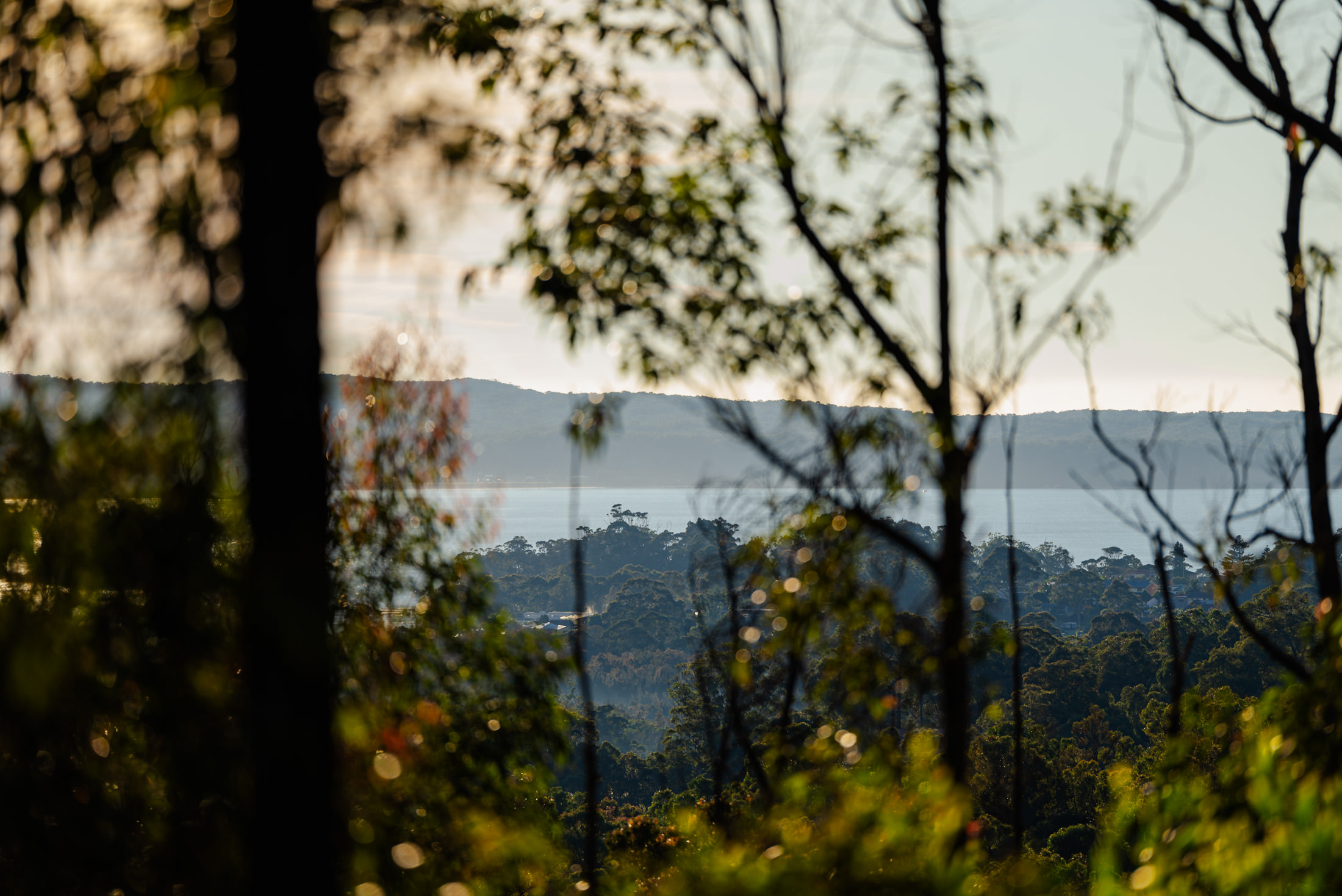
“When we did the REF (Review of Environmental Factors), we did it for the entire footprint, which was meant to cross multiple land tenures — both forestry and crown land. Crown Land had some challenges, and we had to get a licence from them. That REF process essentially took a year, and you would pick at one thread to deal with one thing, and it would explode into five more things and across different government agencies,” he says.
Spicer also notes that there are a number of Aboriginal land claims in the crown land around the trail network, and while there was a pathway to build on that land, they made the conscious decision to avoid it.
“We didn’t want in any way, shape, or form to have a network that might inhibit the success of that claim. We have plenty of other spaces to work. We’ll just avoid that area,” he says. “We have a great relationship with the local Aboriginal Land Council, and they want to set up cultural tourism off the back of this, which can utilise the network, and we’re hoping to partner with them and look at niche markets which aren’t being done anywhere else.”
While it’s been a long process to get here, as Spicer points out, now they have a trail network curing in the woods that would be the envy of many councils and tourism departments around the country by length alone.
Flow’s own Murray Farrell who shot the photos you’re looking at in this very feature was impressed with the variety of the trails and how well everything just worked.
“It takes a lot of Narooma’s big hit flavoured stuff, and married it with some of Eden’s tighter, twistier, faster style of singletrack,” says Farrell
“On one of the blue flow trails we rode, I could hit the whole thing blind with a camera bag on the first run down. All the features, regardless of their size, were very safe,” he says.
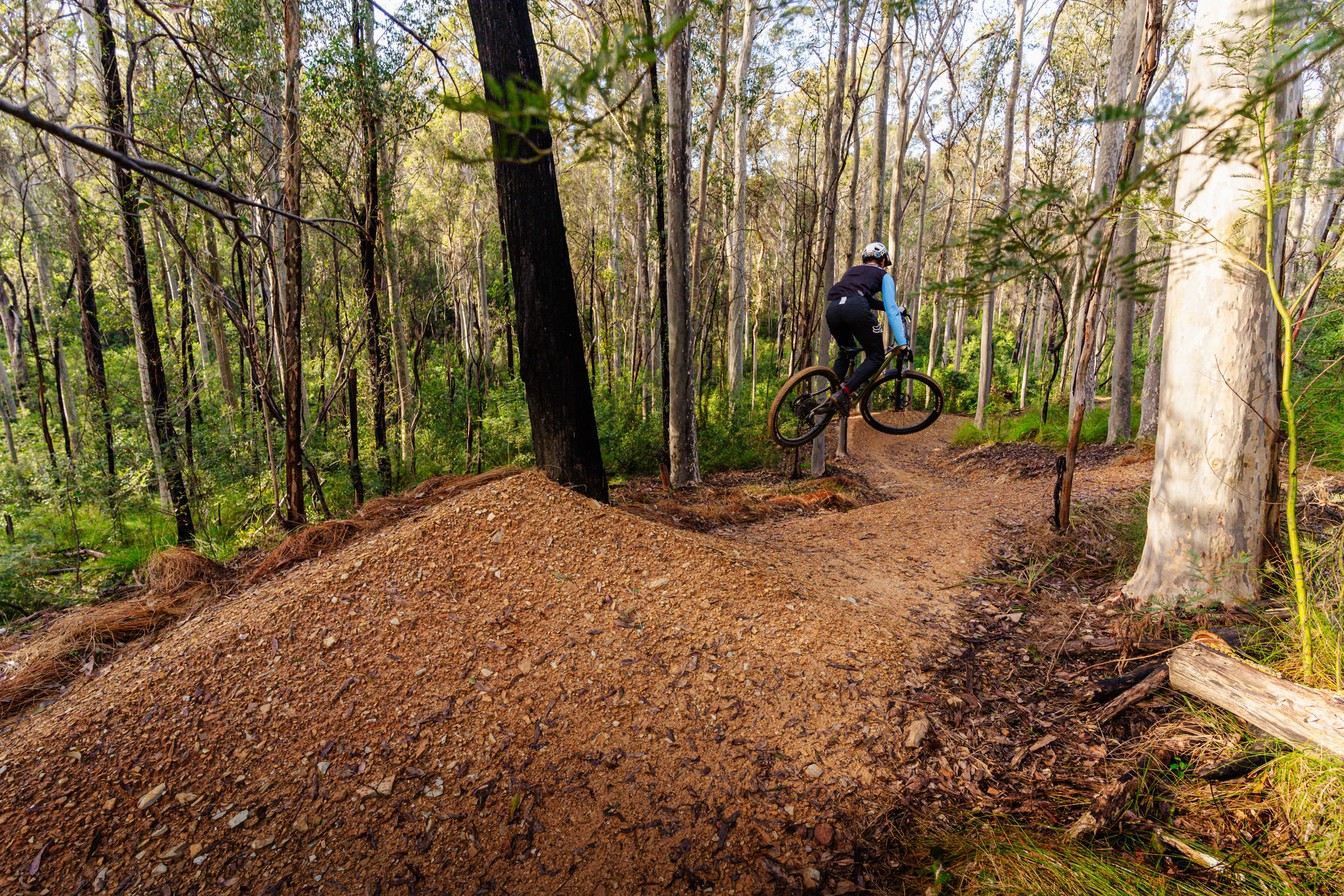
He was also impressed by the park’s overall scale and the features Next Level had built.
“It’s pretty cool to see some bike park style features popping up in a place that hasn’t seen anything of that scale ever in mountain biking. It’s all been old-school XC for the past three decades,” he says.
Making something from nothing
Spicer was born in Batemans Bay and grew up in the area — attending Mogo School — before moving to Rotorua for a decade.
“It took Rotorua 20 years to get to where it is. We’re close to building that network in a few years,” he says. “To try and plan that on the front end and deliver something that everyone can be proud of is super challenging.”
On opening Spicer tells Flow there will be around 60-80 km of singletrack ready — they’re still nutting out exactly which trails will welcome riders at the start of August.
Spicer tells us the east side of the network is currently home to about 80km, though that may continue to grow.
“The terrain isn’t super rocky, and there aren’t a tonne of (natural) features (in that section), so Next Level have had to manufacture those features and that fun factor,” says Spicer. “On the West side, the terrain is quite different. It’s a bit more inaccessible — a bit more adventure-style riding — that’ll be a remote drop with a couple of long descents.
The geology on that side is quite different. We’ve got a lot of decomposed granite and some giant granite boulders. It’s a totally different environment, and they will complement each other nicely,” he says.
A common theme with new trail networks today is that they are divided into sections based on a specific riding style—usually dictated by the terrain. Shooting just down the road to Narooma, you have the Gravity Zone, Adventure Zone, The Playground, Trail Riding Zone, and the Northern Zone — you get the idea.
Spicer explains that in speaking with Martin Wisata from Rocky Trail, this is something they had planned to implement in Mogo, but it needed to be meaningful. However because of the variety and way the network has been built, it was really difficult to chop the trails up in this manner.
“There’s options where you can ride a loop through the whole network on green trails for beginners without riding the same trail (twice) and there’s areas which will end up being shuttled, but there are a couple of them. Those will be lifted gravity stuff, but the footprint of the network is pretty large, and that’s just a drop in the bucket of everything that’s there,” says Spicer.

Evening out the seasons
There will be three trailheads—Mogo, the Botanic Gardens, and Batehaven—and an emphasis has been placed on making the trail network accessible so that you can ride in from your accommodation.
Of course, the NSW South Coast already has an established tourism industry, so it’s not like some mountain bike destinations further afield, where all that’s there is a pub and general store. The towns around the trail network have beds, cafes, and somewhere to get your supplies.
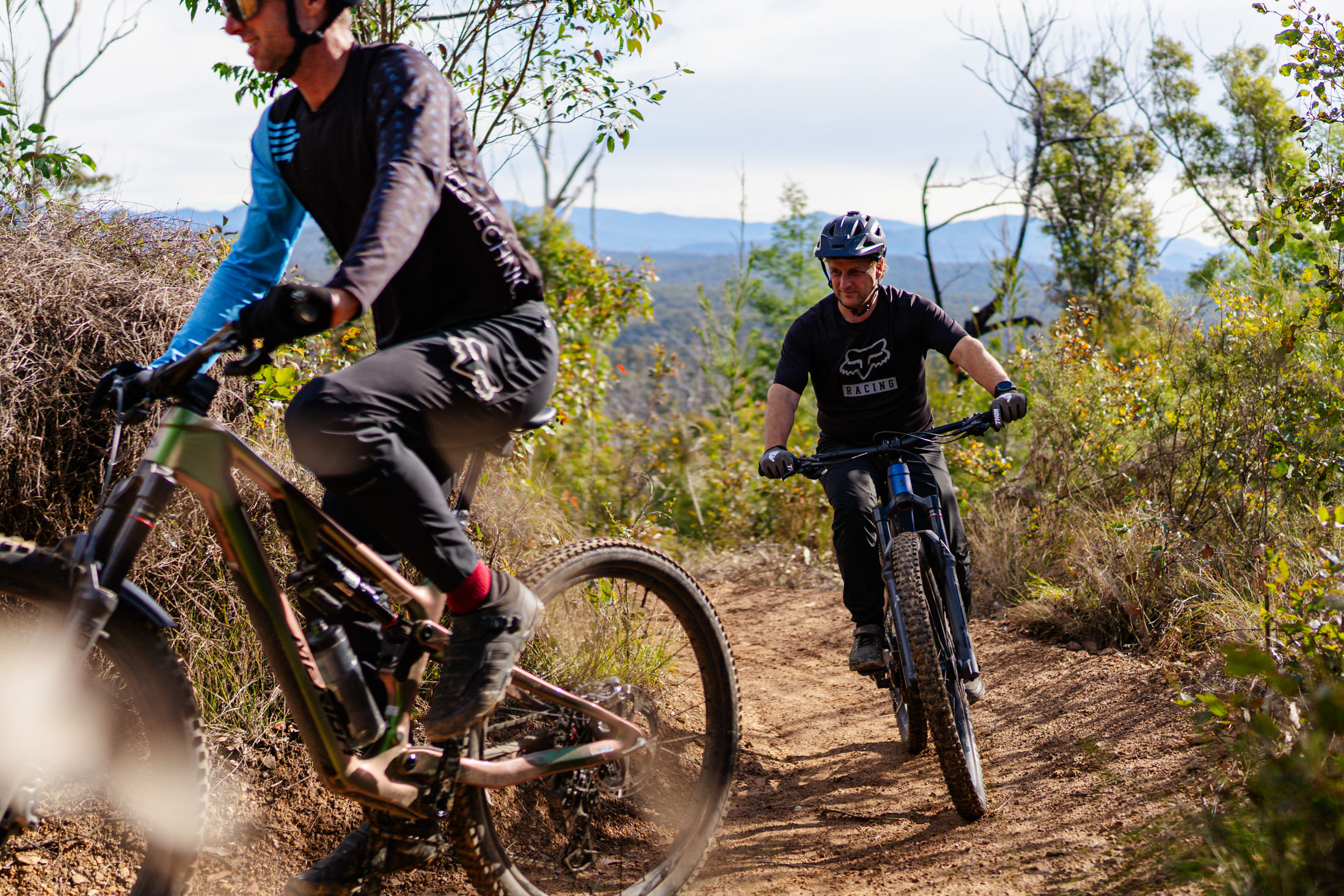
For Mogo locals, before the recent expansion of mountain biking on the South Coast was the Angry Doctor, a 100km XC race. And when the Council was talking to folks about the trails and what it would do for the area, Spicer said the most common thing he heard was, “I don’t see how this is going to benefit my business.”
“For the Angry Doctor, seven or 800 people would turn up at six in the morning, they would go out riding all day, they were clad in lycra, smelly, and they all got in the cars and left. In terms of the businesses in town, that probably didn’t do much,” he says.
Out of that came the Ready to Ride workshops, where the Council tried to inform the locals that this was different. These weren’t the fly-in-fly-out riders in stretchy pants; they were families and groups who needed places to stay and wanted to buy pizza, beer, and souvenirs.
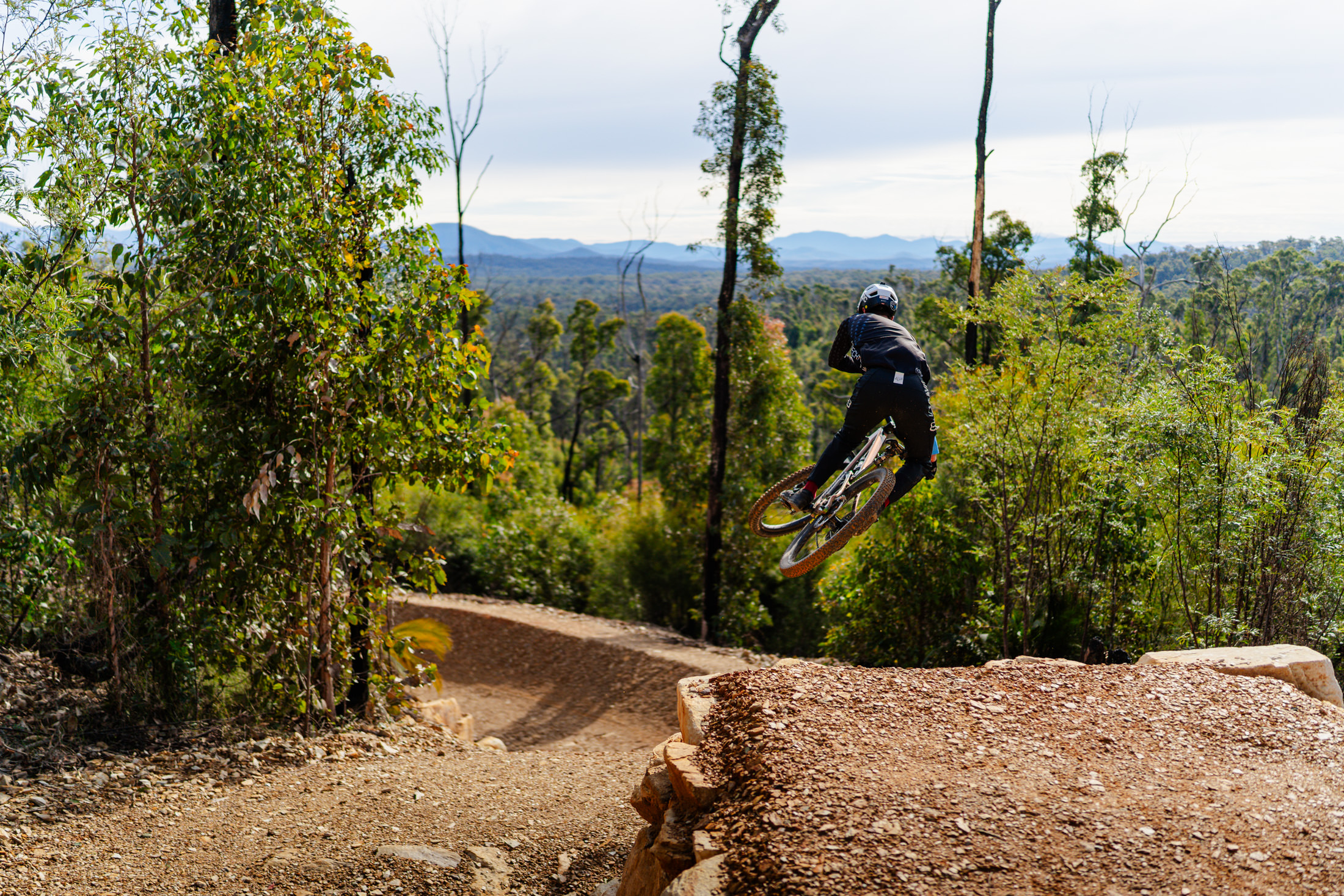
These workshops were rolled out from Batemans Bay down towards Eden to help business owners understand that this new crop of tourists would want places to secure their bikes overnight or a bike wash at their accommodation. They also took folks out into the trails to show them what had been built.
“That just blew their minds. Most of these people weren’t riders and they were expecting a bit of a bush track. Then when you see the shapes the builders are doing, they were like, my god, this is nothing like I expected,” he says.
The other thing that Mogo has going for is that Narooma opened last year.
“That happened kind of midway through the program. We would talk to businesses and be like, what happened when they opened? They would say, the tap was turned on, and it hasn’t turned off yet. And that feedback is not the Council saying this is going to be a thing; it’s business up and down the coast saying it, and that is a valuable thing,” he says.

When can you ride in Mogo?
There is nearly 100km of singletrack out in the forest around Mogo and Batemans Bay baking nearly ready to be pulled out of the oven. Spicer said he expects there will be 65-70km ready to shred, and the Council is just polishing up the trailheads so the riders don’t arrive to toilets that aren’t ready.
The trails aren’t quite open just yet, so you’ll have to be patient a bit longer, but Spicer confirmed the network is set to open in August — the exact date is still to be announced. But when we know we’ll update this story and share the good news, stay tuned folks.
For the latest info check out the funky new Mogo Trails website.
Photos: Murray Farrell / @creekrunmedia




